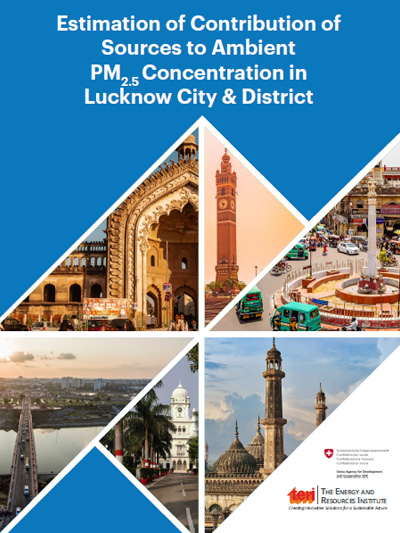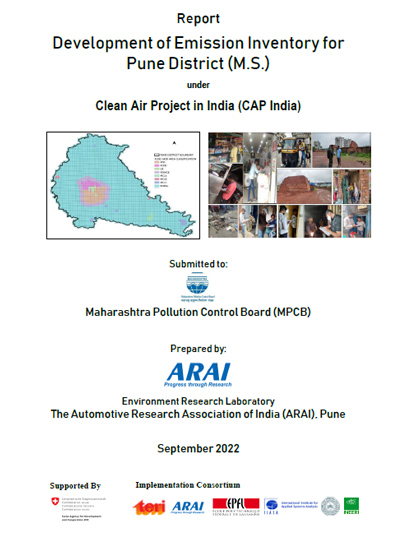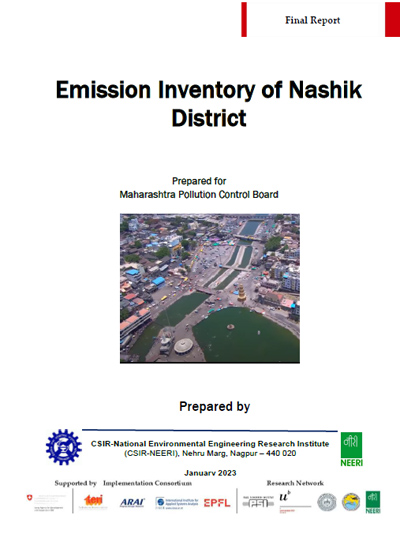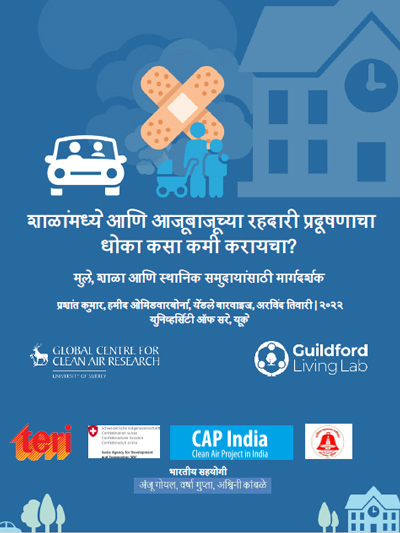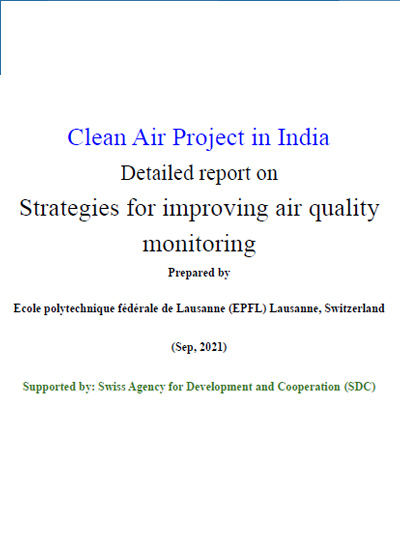Clean Air Projects in India (CAP – India)

To tackle the problem of air pollution, GoI has taken several steps such as setting up of national ambient air quality standards and air quality monitoring programme, penetration of gaseous fuels in residential and transport sector, emission norms for highly polluting industries, advanced vehicular emissions, and fuel quality norms etc. Despite these initiatives, the pollutant levels in cities have not reduced and have increased in many cities with the growth patterns. Evidently, more intensive efforts are still required at both urban and national scale to combat the issue.
As a first step in this direction, MoEF&CC, GoI, has launched the national clean air framework i.e. National Clean Air Program (NCAP) with a goal to meet the prescribed annual average ambient air quality standards at all locations in the country and with an interim national level target of 20-30% reduction of PM2.5 and PM10 concentration by 2024. For this, the NCAP also stresses upon sharing of best practices and increased cooperation with international agencies. In view of supporting the India’s effort for improving air quality, the Swiss Agency for Development and Cooperation (SDC) initiated the long-term ‘Clean air project in India (CAP India)’. The proposed project aim is to “support India’s efforts to improve people’s health and well-being through better air quality, while contributing to environment and climate change mitigation”.
The project has three major outcomes of the projects are:
Outcome 1: Improved data measurement and analysis on clean air.
Outcome 2: Enhanced capacities of city and state authorities to implement clean air policies and action plans.
Outcome 3: Awareness for clean air action is raised.
Implementation consortium
- The Energy and Resources Institute (TERI)
- Swiss Federal Institute for Technology (EPFL) in Lausanne
- Automotive Research Association of India
- National Environmental Engineering and Research Institute (NEERI)
- IIT Kanpur
- International Institute for Applied System Analysis (IIASA)
Research network
- Paul Scherrer Institute (PSI)
- University of Bern
- IIT Kanpur
- National Environmental Engineering and Research Institute (NEERI)
Estimation of Contribution of Sources to Ambient PM2.5 Concentration in Lucknow City & District
This report has systematically assessed the emissions of particulate matter (PM10 and PM2.5) and gaseous pollutants (SOX, NOX, CO, NMVOC) originating from diverse sources of air pollution within the geographical confines of Lucknow district. Additionally, a dispersion model has been employed to estimate the proportional contribution of various sources to ambient PM10 and PM2.5 concentrations in Lucknow city. The inventory encompasses 13 sectors, classified based on either the fuel consumption within these sectors or the extent of their activities. These sectors include industries, transport, road dust re-suspension, agriculture residue burning, residential areas, refuse burning, brick kilns, diesel generator sets, aviation, construction, crematoria, landfills, and hotels and restaurants.
Remarkably, the residential sector emerges as a significant contributor across all seasons, accounting for approximately 23% of the yearly average in PM2.5 concentrations. Notably, during the winter season, it attains the highest contribution at 27%. On an annual average, approximately 19% of the ambient PM2.5 concentration originates from sources within the city's boundaries, while the remaining 81% emanates from outside the city limits.
Report Development of Emission Inventory for Pune District
It is imperative to enhance or update the current air quality management plans for Pune district with the latest insights into emissions and air quality in the region. Therefore, this study aims to conduct an inventory of air pollutant emissions in Pune district. The study quantifies baseline emissions of air pollutants (PM10, PM2.5, SO2, NOx, CO, and NMVOC) originating from twelve distinct sectors in Pune district, including Transport, Dust, Open Waste Burning, Residential, Industries, Diesel Generators, Hotels, Restaurants and Bakeries (HRB), Crematoria, Agricultural Residue Burning, Aircraft, and Construction.
The emission inventory for urban areas reveals a dominance of transport-related emissions, such as vehicular exhaust and road dust re-suspension, followed by open waste burning and activities in hotels and restaurants. This trend is attributed to densely populated areas with high vehicular movement. Conversely, emissions from rural areas are predominantly driven by agricultural residue burning and residential cooking and heating emissions. Noteworthy PM10 sources in Pune district include road dust (34%), construction and allied activities (23%), industries (10%), and transport (10%). Meanwhile, PM2.5 emissions are primarily dominated by transport (19%), road dust, and industry (18% each), with agricultural waste burning contributing 13%.
Emission Inventory of Nashik District
This report has systematically assessed the emissions of PM10, PM2.5, SOX, NOX, HC, NMVOCs, and CO emanating from diverse sources of air pollution within both the City and District of Nashik. A comprehensive inventory has been conducted, encompassing a total of 11 sectors identified in Nashik City and District, each playing a role in the degradation of air quality in the region. These eleven sectors, including Industries, transport, road dust re-suspension, residential areas, brick kilns, construction, crematoria, stone crushers, bakeries, open eat-outs, and hotels and restaurants, were inventoried based on the fuel consumed in these sectors or the extent of their activities.
The emission inventory findings for Nashik City and District in 2021 highlight that industries are the primary contributors to particulate matter (PM10) emissions, accounting for 44%. Following closely, the transport sector contributes 34% to the total PM10 emissions in the district.
शाळांमध्ये आणि आजूबाजूच्या रहदारी प्रदूषणाचा धोका कसा कमी करायचा?? (Marathi version of How to reduce the risk of traffic pollution in and around schools??)
This document provides a concise overview of the optimal strategies for mitigating air pollution exposure in and around school environments. The recommendations presented are grounded in contemporary scientific evidence, and as the evidence base continues to evolve, these recommendations may undergo modifications. What sets this document apart is its distinctive approach, collaboratively developed and designed to be practical, addressing key recipient groups—children, schools, and communities—with equal emphasis. Drawing from significant research and review studies, it builds upon the insights gained from our Guildford Living Lab (GLL) initiatives and our extensive experience in offering guidance to the public and practitioners. This includes pioneering guidance on implementing green infrastructure, general recommendations for selecting and managing plant species, and the creation of numerous policy briefs.
Detailed report on Strategies for improving air quality monitoring
This report evaluates the existing air quality monitoring networks in four focus cities (Kanpur, Lucknow, Pune, and Nashik) within the CAP India project, aligning the assessment with CPCB guidelines. The analysis incorporates existing monitoring measurements, secondary literature, available satellite data, and on-site visits conducted in all four cities. Each monitoring station in the current network underwent assessment, and metadata was generated for each station, specifying its monitoring objective, whether related to population exposure assessment, compliance with national standards, or source characterization. Identification of gaps pertained to the deficiency in the number and placement of monitoring sites necessary to fulfill each guideline-defined monitoring objective, with suggested proposals for new monitoring site locations. Additionally, recognizing that CPCB guidelines closely follow Western (WHO and US) standards, recommendations for future revisions are made to better align with the specific urban development context in India. To pinpoint potential new monitoring sites, various data sources, including night-time light data, satellite-derived PM2.5, existing emission inventory, and land-use patterns, were utilized across Lucknow, Kanpur, Pune, and Nashik.
Prioritisation of actions in the existing clean air action plan for Pune and Nashik
The municipal administration and state regulatory bodies have collaboratively developed an action plan within the framework of the National Clean Air Program (NCAP). These plans encompass diverse strategies aimed at mitigating sector-specific emissions, thereby contributing to the enhancement of air quality. Given the inherent limitations in the resources available for executing these action plans, there is a critical need to focus efforts on specific actions to maximize their impact. Consequently, the prioritization of interventions for air pollution control in urban areas emerges as a pivotal task for regulatory agencies, necessitating the formulation of a systematic methodological approach.
The optimization of interventions is an intricate undertaking, requiring assessments across various criteria, including technological feasibility, societal impact, sustainability, environmental benefits, and costs. This report adopts a methodology that centers on prioritizing air pollution control interventions, placing a primary emphasis on insights from local stakeholders spanning industry, academia, government departments, and non-governmental organizations. These insights inform an evaluation of the effectiveness of each air pollution intervention outlined in the Comprehensive Air Action Plan (CAAP) for Pune and Nashik cities, utilizing the ELECTRE-III multi-criteria analysis technique. The resulting output, presented as ranks for each intervention, serves as a basis for identifying optimal measures to address air pollution challenges.


